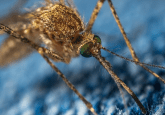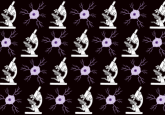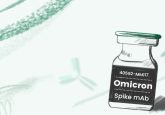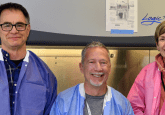Peek behind the paper: Methods to evaluate the impact of SARS-CoV-2 nucleocapsid mutations on antigen detection by rapid diagnostic tests
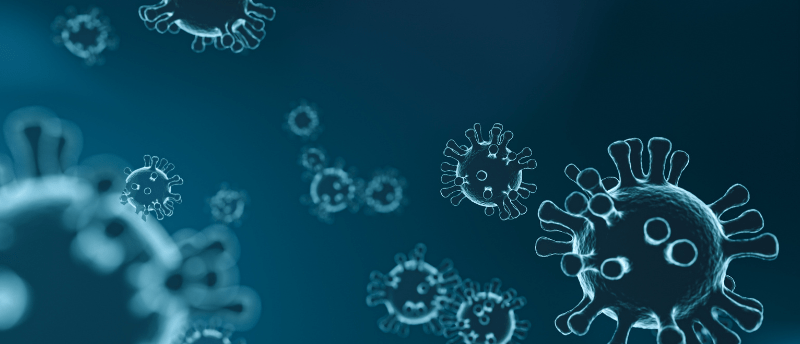
 Bryan Tieman is a Principal Scientist in the Diagnostics Division of Abbott Laboratories (IL, USA) and is a member of the Biologics Discovery Group where he creates binding agents and targets for the generation of diagnostic assays. In this ‘Peek behind the paper’, Tieman discusses his method to generate recombinant protein mutants of target SARS-CoV-2 antigens to create mock virus samples of emerging variants.
Bryan Tieman is a Principal Scientist in the Diagnostics Division of Abbott Laboratories (IL, USA) and is a member of the Biologics Discovery Group where he creates binding agents and targets for the generation of diagnostic assays. In this ‘Peek behind the paper’, Tieman discusses his method to generate recombinant protein mutants of target SARS-CoV-2 antigens to create mock virus samples of emerging variants.
Tieman’s research focuses on how to use technologies to expand biologics development in a high-throughput manner and how and why molecules interact. He is also interested in a selected target’s relevant biologic function and its relative nuances. This paper looks at developing a method to assess how SARS-CoV-2 nucleocapsid mutations affect antigen detection.
Please provide a short summary of your paper
The utility of screening Abbott Laboratories COVID-19 immunodiagnostic lateral flow assays against emerging mutants has demonstrated the robustness of the assay as well as the selected biologics. Instead of the limitations in acquiring samples of viral strains during an active pandemic (sourcing and transport, proper collection and storage, ensuring homogeneity of the virus strain, sample buffer composition, sample integrity and sufficient volumes), unlimited numbers of mutants can be generated in the laboratory where the limitations would only be personnel and resources. By generating recombinant protein mutants of the target antigen, SARS-CoV-2 nucleocapsid, and using universal expression and purification protocols, the rapid generation of panels representing mock virus samples of the emerging variants was easily created, characterized and tested. We found that the convenience and effectiveness of recombinant mutants:
- Minimized the hazards associated with biological samples
- Ensured that the proteins were homogeneous
- Supplied sufficient samples for testing the individual biologics by orthogonal methods
It took the efforts of everyone to identify, create, express, purify, characterize and test all these biologics.
This technique could be exploited to any biologic, presuming expression and purification protocols created for the wild-type variant can be applied to the mutants.
What inspired you to develop this new method?
As the COVID-19 pandemic progressed since its outbreak in 2019, variants of concern rapidly evolved throughout the world and temporally represented the dominant strain or variant of concern of the coronavirus. These emerging mutants could compromise the detection efficacy of the COVID-19 assays as the pandemic ensued. Instead of attempting to identify and source native samples representing various mutants, a more effective method was regularly mining the public sequence databases for new mutations, particularly in the nucleocapsid, and not the spike protein responsible for infecting host cells. Upcoming SARS-CoV-2 nucleocapsid mutations could be identified, created and used to evaluate the assay and characterize the assays’ reagents as well as potential replacement biologics.
What impact do you hope it will have on laboratory researchers?
First, while native samples are the most ideal for testing, it demonstrates that well-characterized recombinant reagents can create mock samples to evaluate the efficacy of reagents used in the COVID-19 assay.
Secondly, it will demonstrate the reliability and robustness of the COVID-19 assays and their reagents to detect SARS-CoV-2 variants and produce high confidence in the assay results.
Thirdly, it affords characterization of the original biologics as well as the selection of new, alternative biologics if the original COVID-19 assays, unfortunately, fail to detect new SARS-CoV-2 variants.
Do you have any tips for best practice for researchers looking to use this method?
The success of this method was the creation of robust expression and purification protocols for the original wild-type SARS-CoV-2. With automated purification systems, bacterial lysates of SARS-CoV-2 nucleocapsid mutants were rapidly and successfully purified so they could be evaluated by the COVID-19 assays and SARS-CoV-2 nucleocapsid binding reagents.
What are you hoping to do next in this area?
With vaccines, diagnostics and medications that protect, detect and treat SARS-CoV-2 infections, the COVID-19 pandemic continues to taper off since the last infection spike at the end of 2021, caused by the Omicron variant and lessened restrictions. As reported cases continue to decrease, the opportunity for the virus to mutate should reduce and the production of new variants of concern should follow suit. However, if the coronavirus does evolve to create new variants, this method could be used for continued verification of the COVID-19 assays and biologics for detecting SARS-CoV-2 viral infections as well as create new biologics reagents to enhance the assay effectiveness.
